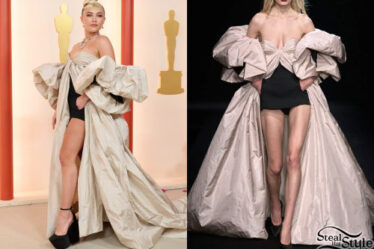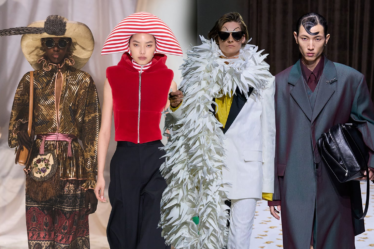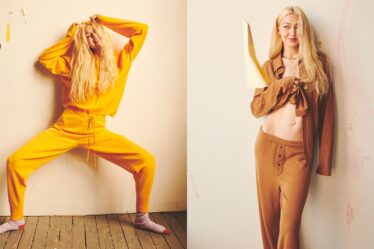
Pink may go good with green, but there’s so much more behind the Wicked costumes. Here, the Tony Award-winning designer breaks it down for us.
Courtesy NBC Universal

“My relationship to the story overall starts back at The Wizard of Oz growing up,” Paul Tazewell tells Wonderland as we sit down to talk about Wicked’s costume design. It’s the day after the European premiere and London’s Corinthia hotel is packed with journalists eager to hear from the cast and crew of the long-awaited film adaptation just days before it hits theatres.
If you’re unfamiliar with the story of Wicked – a prequel to L. Frank Baum’s novel The Wonderful Wizard of Oz (1900) – the Stephen Schwartz and Winnie Holzman Broadway production first gave a stage to the origin story of the early twentieth century villain back in 2003, showing the Wicked Witch of the West as a young girl with green skin and magical powers navigating a world (and university) of ostracization. Known as Elphaba long before Dorothy lands in Oz, the protagonist of Wicked lets viewers in on the complex tribulations that lead a person to become “wicked,” asking the now infamous question: “Are people born wicked, or is wickedness thrust upon them?”
Now, director Jon Chu (Crazy Rich Asians, In The Heights) brings the beloved show to the big screen with a two part film starring Cynthia Erivo and Ariana Grande alongside Jonathan Bailey, Ethan Slater, Bowen Yang, Michelle Yeoh, and Jeff Goldblum. The first instalment, which hits theatres today (November 22, 2024), chronicles Elphaba’s (Erivo) upbringing and unlikely friendship with Shiz University roommate Glinda (Grande) – the future “Good Witch” of Oz.
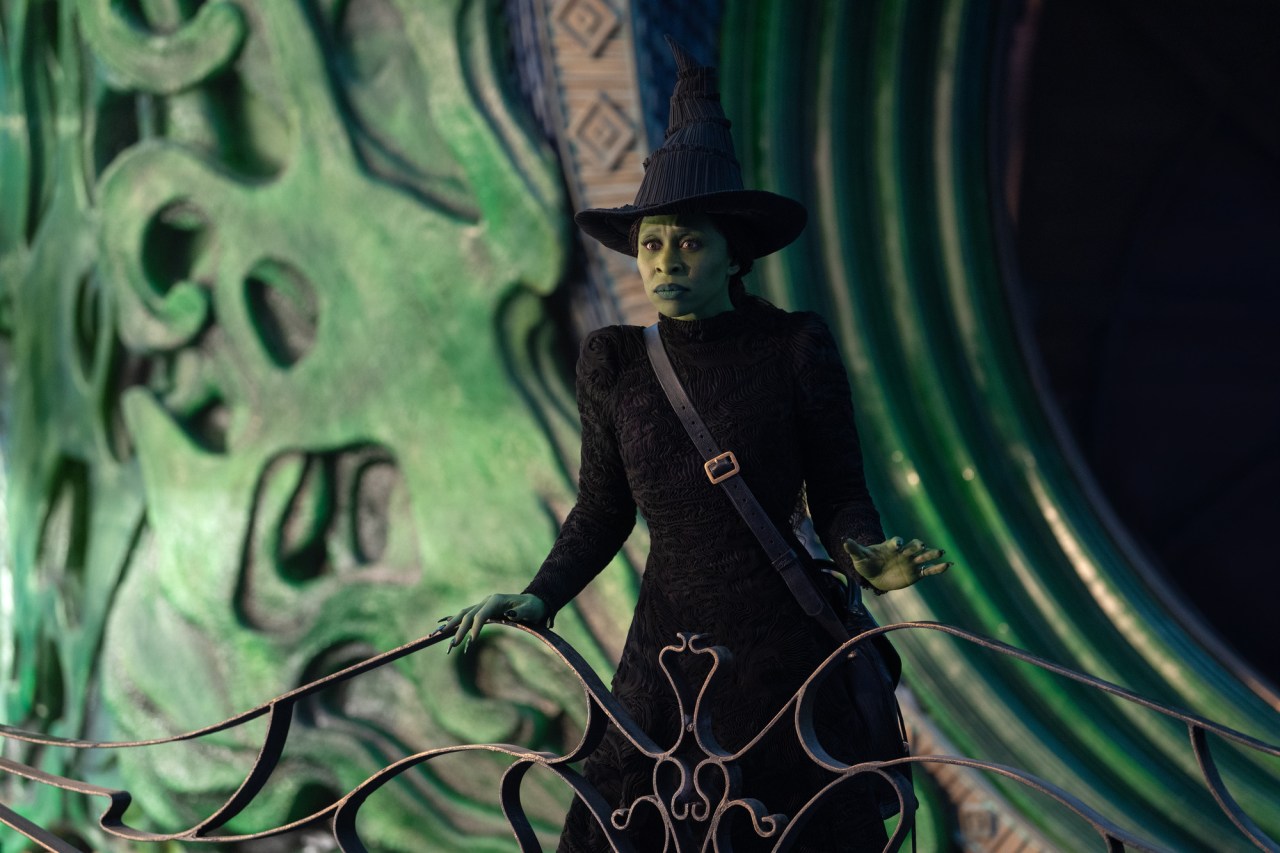
Courtesy NBC Universal

Given the breadth of the franchise that the new Wicked builds upon and the strength of its fanbase, visually reimagining the characters for the screen required a comprehensive, creative, and caring lens — one that Tony Award-winning costume designer Paul Tazewell was a natural match for. Credited for the likes of The Colour Purple (2005), Hamilton (2015), and transforming West Side Story’s fashion from stage to film, Tazewell’s resume includes over a dozen Broadway productions spanning nearly three decades, including a televised version of The Wiz, a soul reinterpretation of Baum’s The Wonderful Wizard of Oz.
For his own reimagining of Wicked, Tazewell drew from his past experiences with West Side Story and Steven Spielberg, noting the goal of turning a beloved stage show into something spectacular on screen is always to “invite the audience into experiencing all of those scenes that they remember from the Broadway show with the same spirit, but in a fresh way that has them see and experience that scene in a new way.” Here, he plays with the past iterations of Elphaba and Glinda’s characters through colour palettes, motifs, and silhouettes, yet extrapolates and contextualises the nostalgic references to say something modern.
“I don’t know that it is as exciting to see a recreation of something,” he tells us. “The Broadway musical has a huge fan base and I was aware of that as I was designing, but very mindful of the fact that Jon Chu, the director, wanted to create an original, brand new vision of what this world might be, that could be additive to the culture of Wicked. I think that it is important for it to feel nostalgic because it feels very familiar, but then to give it a new breath.”
“Also, Cynthia Erivo as Elphaba and Ariana Grande as Glinda require that those characters are re-imagined,” he continues. “Because they play the roles in a much different way.”
For Elphaba in particular, who is known to viewers for her all black looks, building out her wardrobe to create a sense of momentum was a top priority for Tazewell, and came hand-in-hand with Erivo’s nuanced portrayal of the character. Looking into why she wears black, and the ways that he could use texture and fabrics to create intrigue on top of an otherwise monochrome palette, he focused on highlighting the inward journey of the character through her style choices, as she gains a confident sense of self and grows into her own power.
“The reason that we gave [for why she chose black] was because she was in mourning for her mother who passes away early in her childhood,” he explains. “But then she takes hold of the colour palette of black, that kind of monochromatic colour palette, to use as an armour and to set herself apart and to become more reclusive, because of the hurt that she feels from other people.”
“The first time we see her go into Shiz, her silhouette is somewhat restrictive, corseted, but specific to the turn-of-the-century silhouette that again is reflective of the Wicked Witch of the West,” he continues. “Then we continue on into her uniform, which is a beautifully tailored suit with opposing pinstripes, albeit, and continuing that restrictive quality until we get to ‘Popular.’ That number gives her the permission to soften, and that relationship with Glinda, that’s the beginning of how they affect each other as two very close friends, as best friends. And when Fiyero (Bailey) and Elphaba are in the forest with the lion cub, again she softens and becomes more vulnerable with Fiyero. We get this sense that she is realising who she is as a person.”
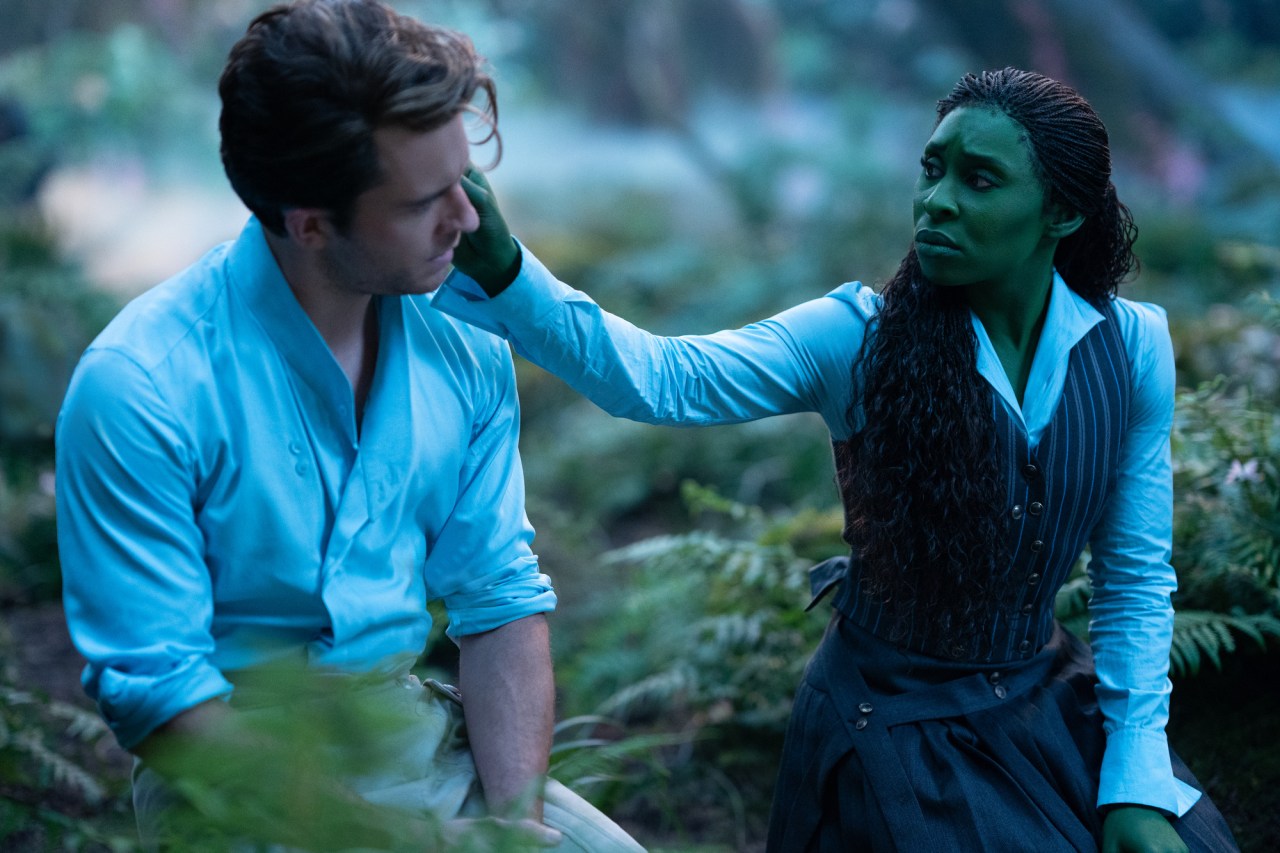
Courtesy NBC Universal

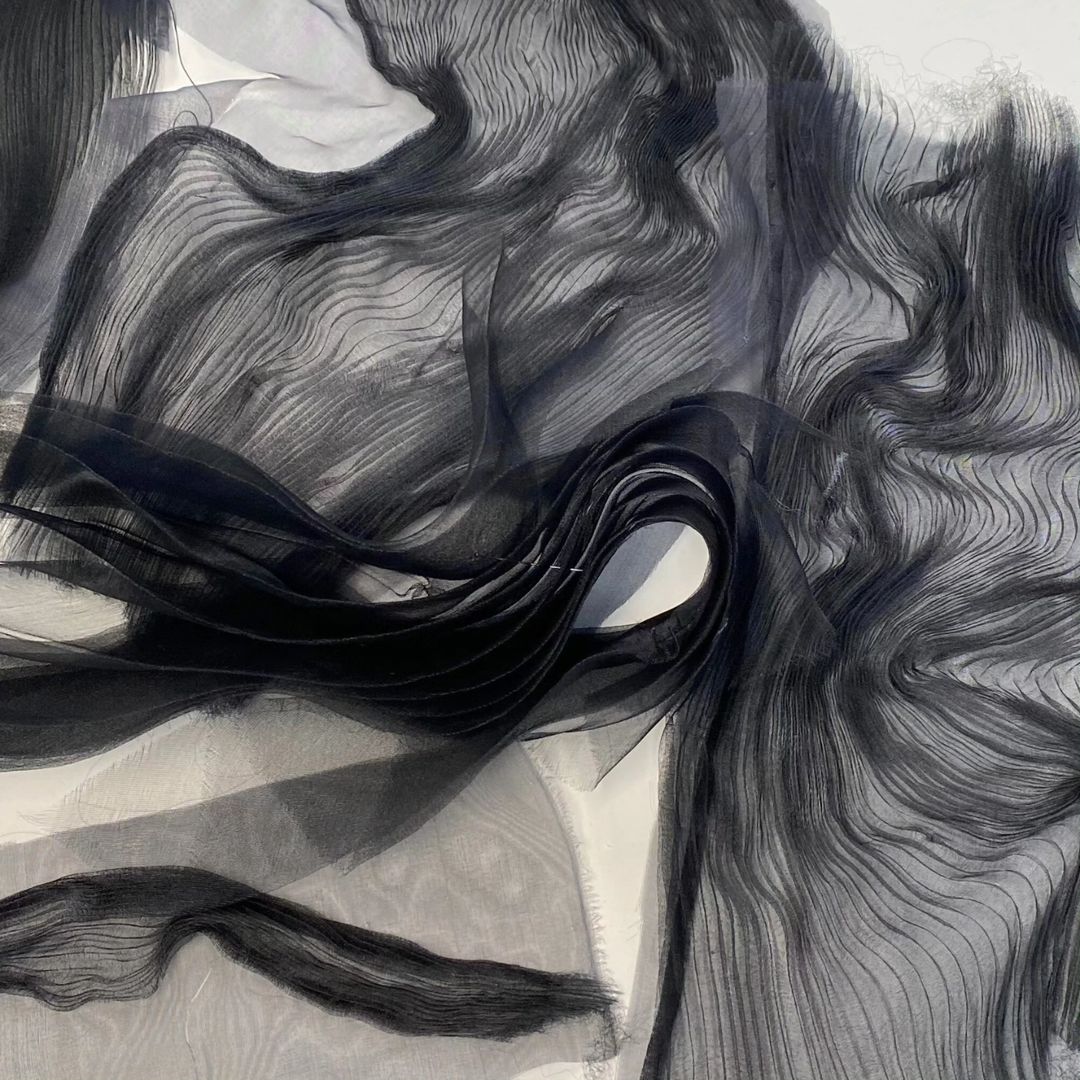
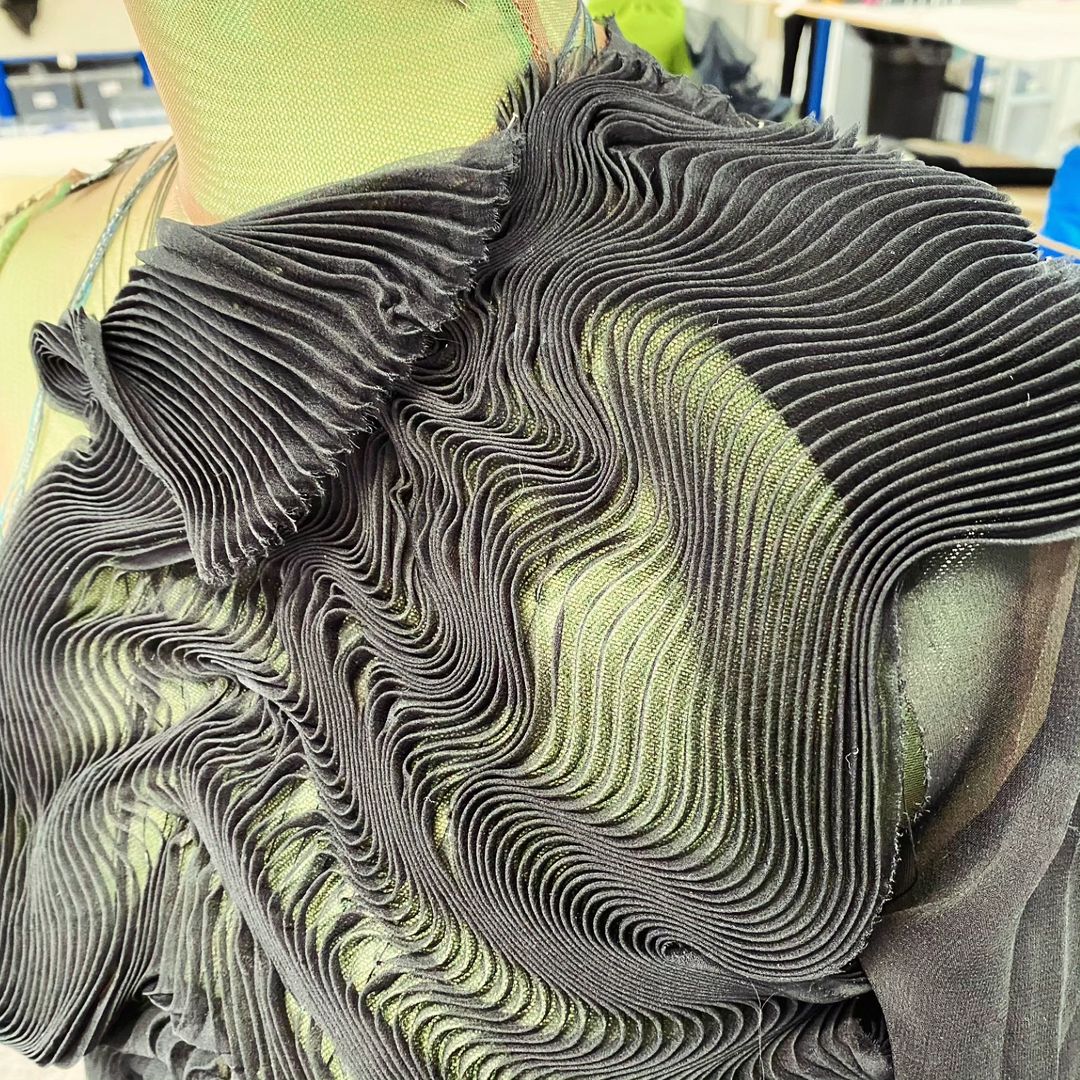
Imagery from @paultazewell


Though Elphaba is known for her magical prowess, causing levitations on campus and ultimately learning to give flight to animals and objects alike, it is her grounded aura and deep care for the natural world that makes its way into her garments. Looking to the underside of mushrooms, vines, leaves, and bark, Tazewell mirrors organic textures in the character’s pinafores through swirling pleated chiffon and lace. In the costume designer’s own words, it gives “her a basis grounding that then contrasts with the foreshadowing of ‘Defying Gravity,’” a moment that he visually builds towards throughout the film — and where Elphaba wears her final look, a silhouette familiar to viewers everywhere.
First popularised in The Wizard of Oz (1939) by Margaret Hamilton’s depiction of the Wicked Witch of the West, the signature three piece ensemble — a pointy hat, gothic Edwardian dress, and matching black cape — has come to define not only the character, but witches in general popular culture, for 85 years. For his own interpretation of the look, which Elphaba donned on her trip to the Emerald City, Tazewell balances the nostalgic silhouette with detail-oriented fabrications and finishes, giving the dress a light and flowing air and covering it with “the swirl of texture and pattern.” He refashions the hat to give it a handmade, organic quality that almost anthropomorphises the piece, and creates a beautiful narrative moment surrounding the cape.
“Glinda grabs the cape, the velvet drape that’s hanging over a rack of old clothing or old costumes, and she lovingly puts it around her neck. And when Elphaba turns around, and she has the cape on, and she spins around, and she opens up the cape in that very dramatic way, it’s absolutely breathtaking to see that and to know that I had a major role in creating what that iconic image is now. It’s just magical with all the elements coming together.”
Another difference in building the costume design for a film versus a theatrical production is the 360° world-building and sheer number of extras, garments, and set design that build around the leads. “We see all of the different elements of the atmosphere and all the different people that create the crowds through Munchkinland and through Emerald City. So there’s a broader sense of what this world is and what we needed to create. And then that allows for our principal characters to live in a more realistic way, albeit a fantasy.”
The part of this world that Elphaba and Glinda live in for the majority of the film is Shiz University, where the fellow students wear school uniforms of teal and coral blazers and kilts. “We were intent on finding a colour palette that would be magical or bring us delight and be completely different from the other films that have school uniforms,” Tazewell explains. “But what was very important for me for all of those uniforms, is that much in the same way that uniforms will be taken by younger people and worn in their own individualised ways, I have that reflected in the different students of Shiz.” For Glinda, this means her own hyper-feminine pink version with nods to Dior’s New Look and 1950s silhouettes, not unlike the rest of her iridescent, bubble-ified wardrobe full of butterflies and sugary sweet pastels. For Elphaba, of course, this looks a bit darker.

Courtesy NBC Universal


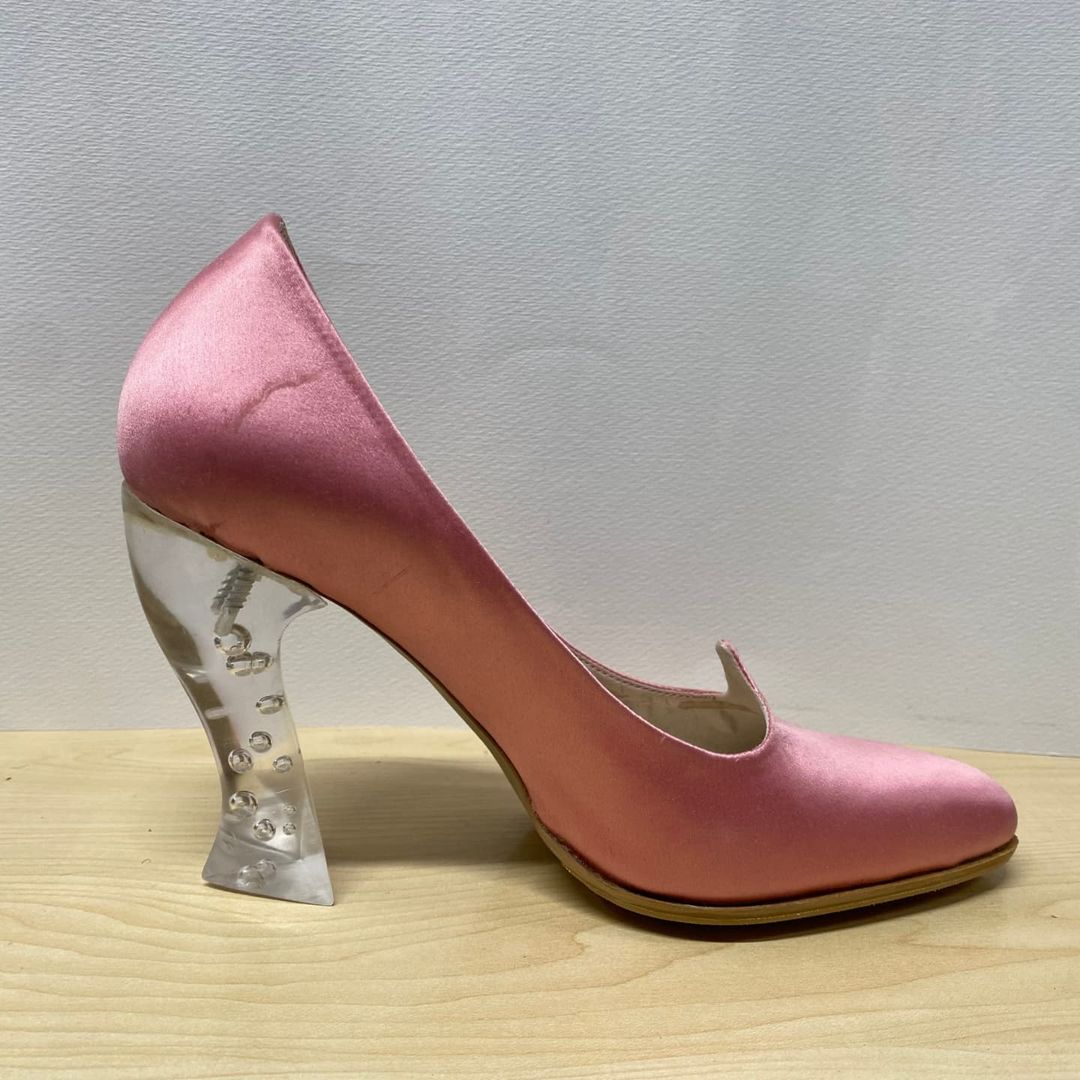
Imagery from @paultazewell


“We see how they shift and change from day to day. And it was a great joy to see those three elements together, if you look at the student body as a group, and then our two principal ladies, how they relate to them and find their way and also stand out.” This can also be seen in the roommates’ dorm room, a classic symbolic representation of one’s inner monologues during their emerging adulthood years; Elphaba’s sparse corner with familial mementos, Glinda’s trunks and trunks of pink tulle, and the push-and-pull between the girls for space.
“I know what it is to live in a dorm room, so to see the reality of what that existence is represented in a fantasy world was really quite wonderful,” Tazewell tells me with a laugh. “I think that it was great fun thinking about, ‘okay, so what would Glinda have in her closet?’ I mean, if she has packed, over-packed, way over-packed for school, what does she bring with her, and what does she think is necessary? When she opens up that one wardrobe and all of these beaded dresses spill out into the space, it’s just delightful, and sets her up for what she will wear at the Ozdust Ball with the flower inspired ombre dress that goes from a deep pink into yellow. It makes sense of who this young woman is and what she would wear.”
Because at its core, that is what Wicked is: the story of two young women, navigating a fantastical and musical world with real struggles of exclusion and oppression, searching for community and belonging while still discovering who they are themselves. Paul Tazewell gives strength to this marriage of magic and reality that’s evident in any coming-of-age film, both humanising the principal characters and highlighting their power through texture and silhouette. And, of course, with lots of pinks and greens.

